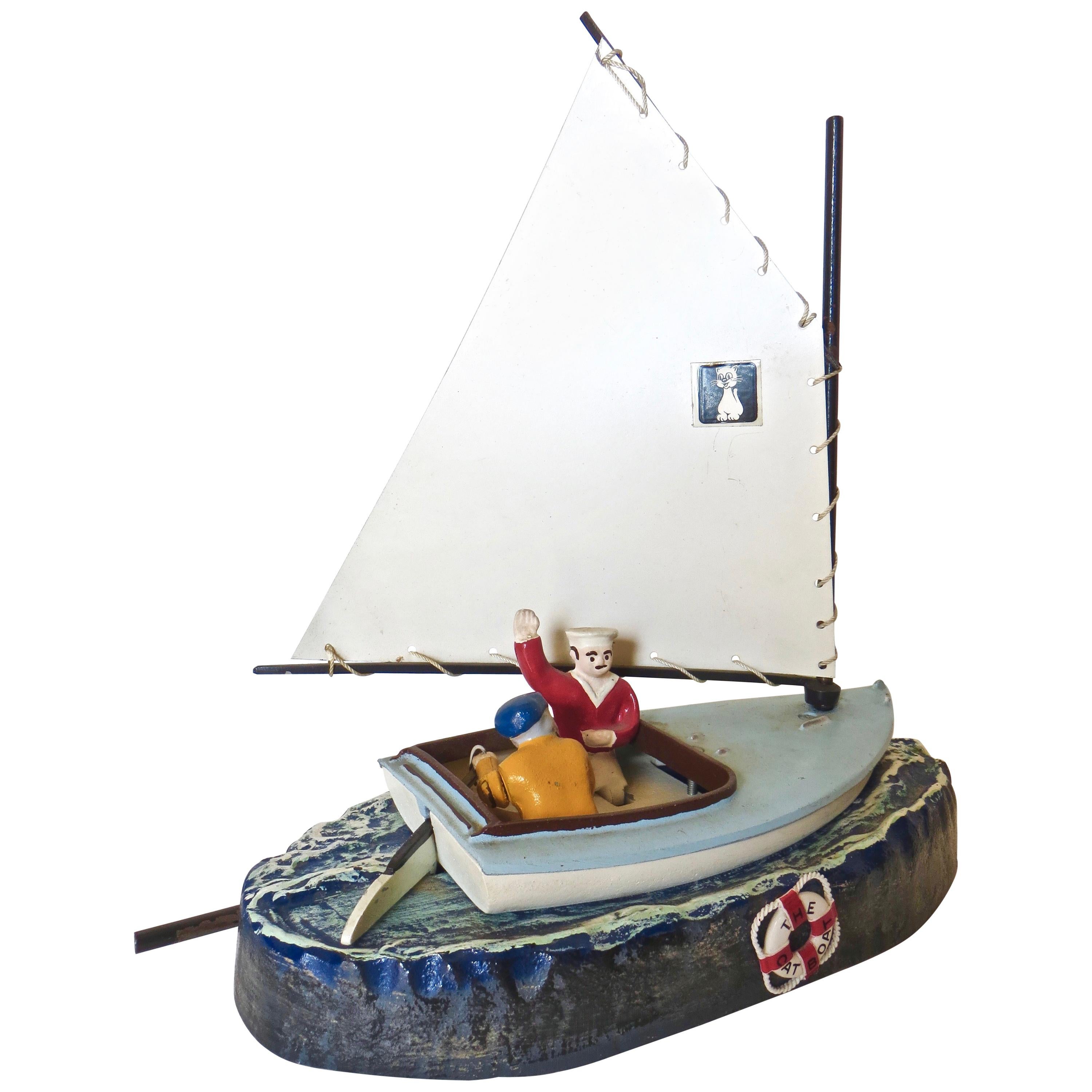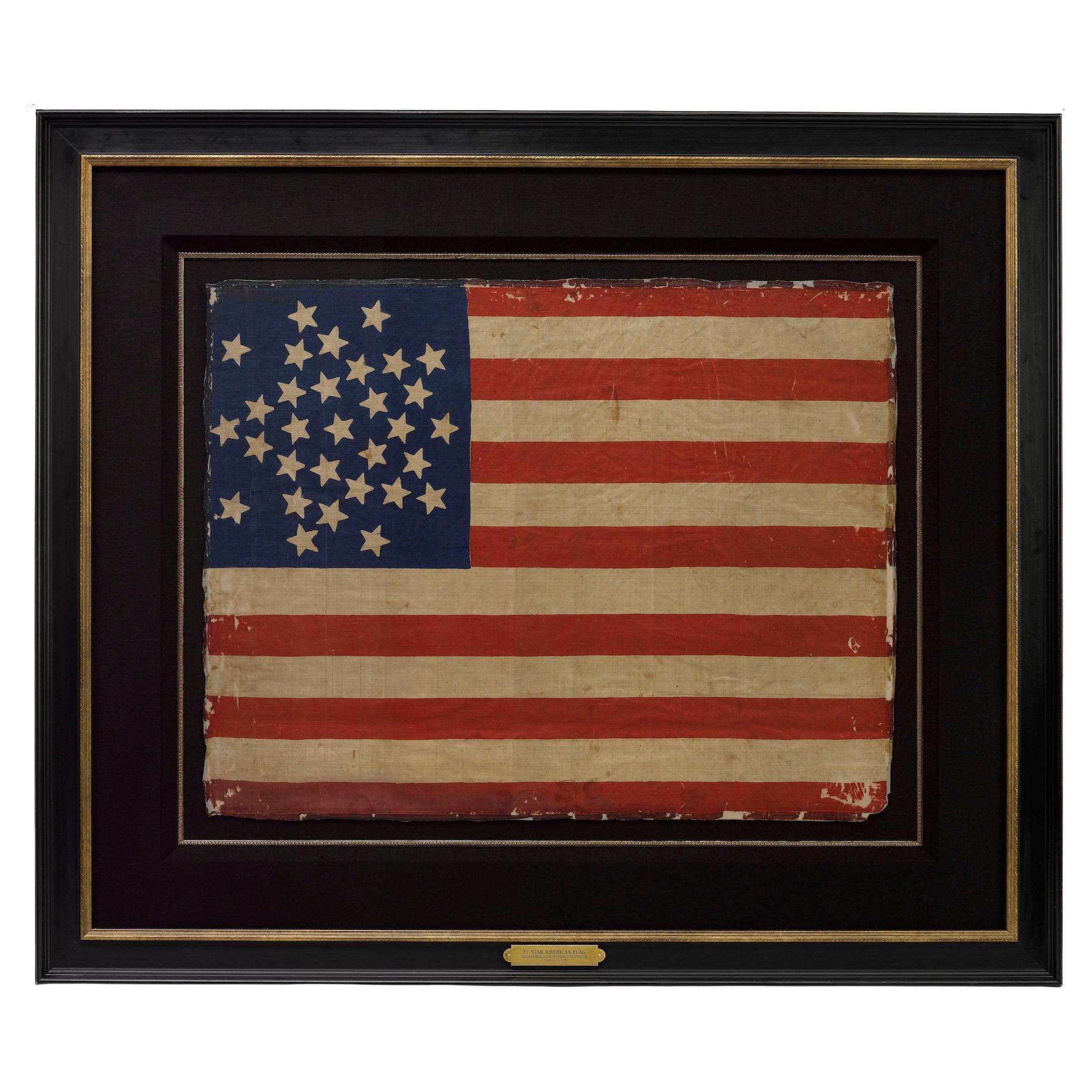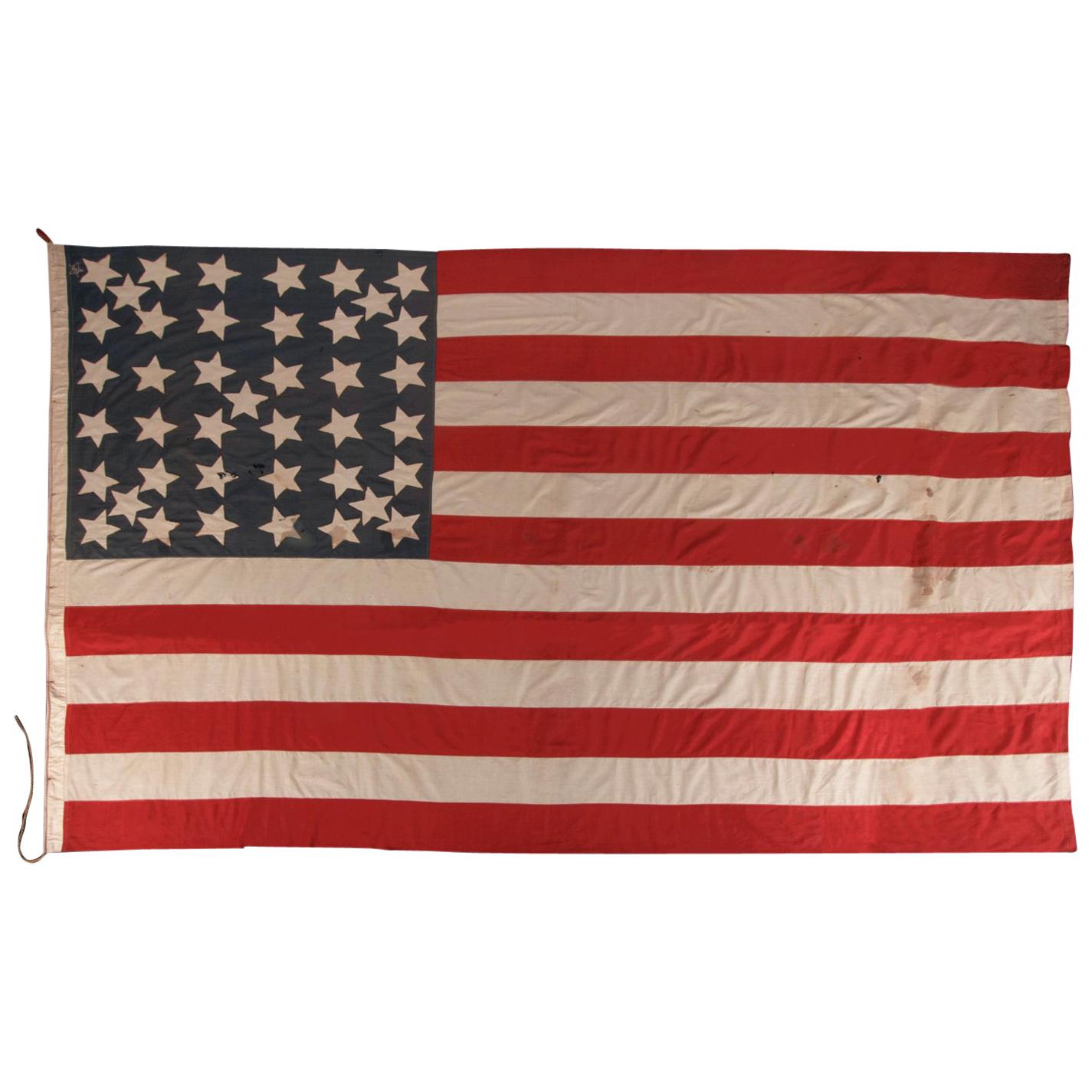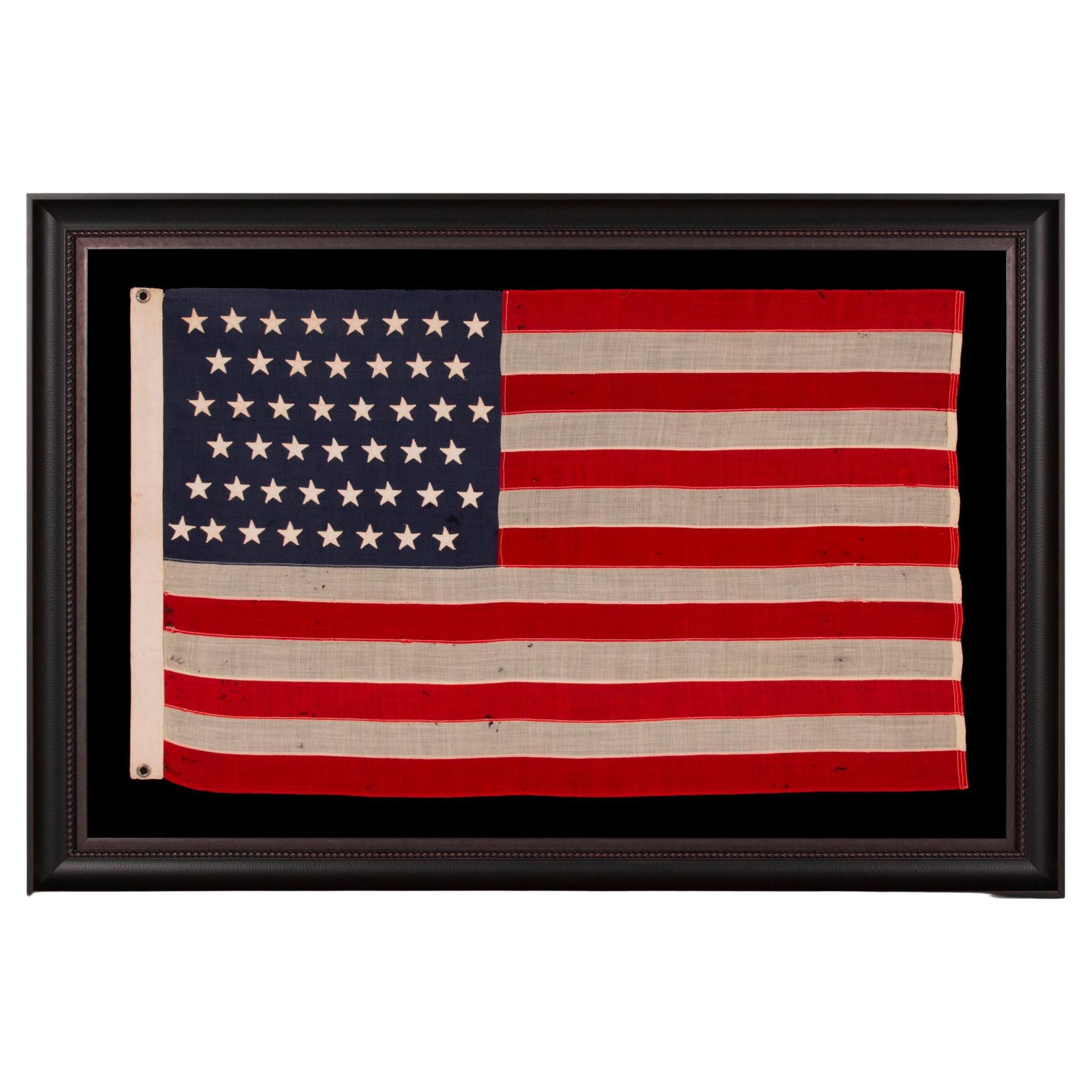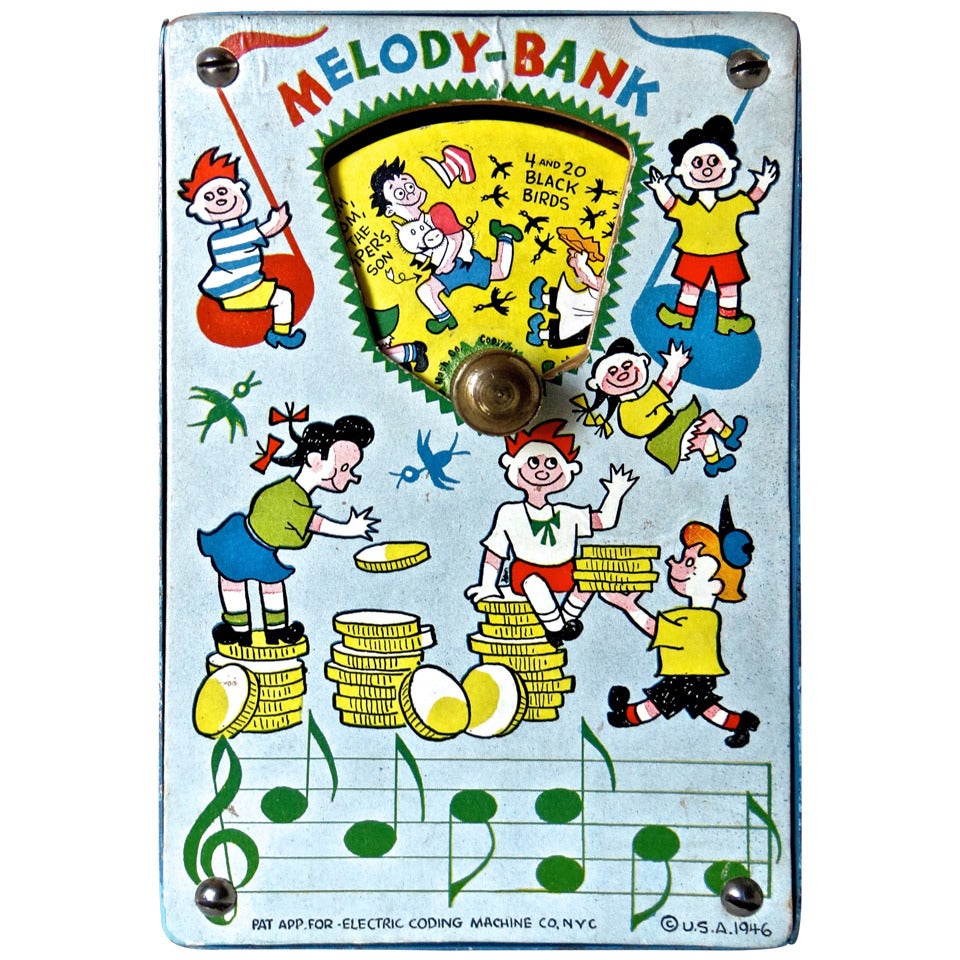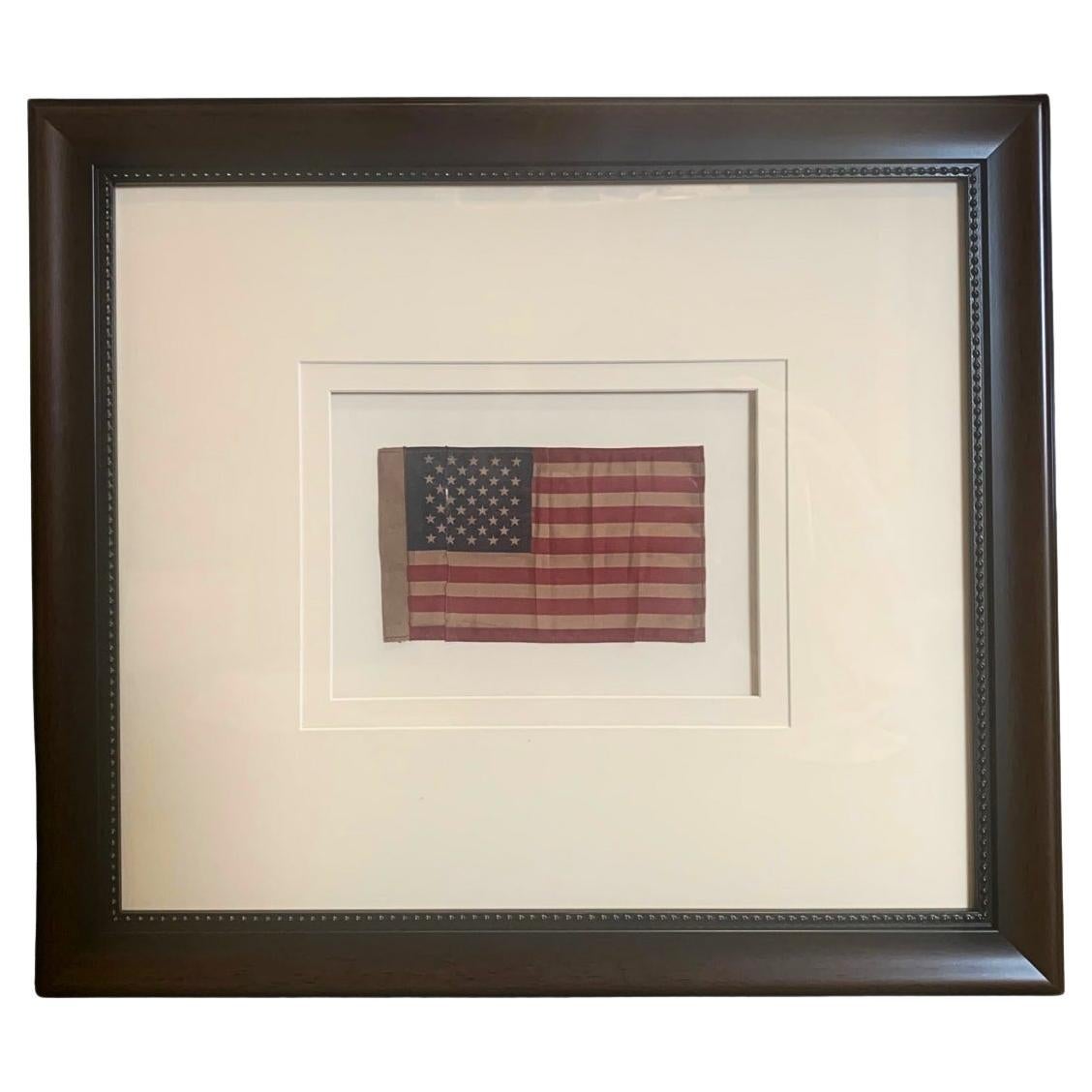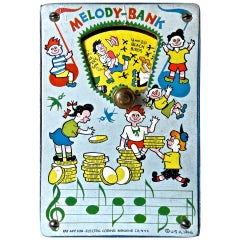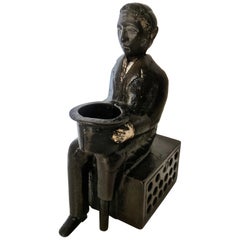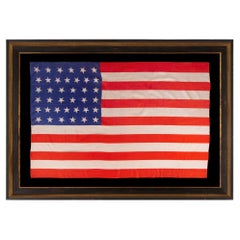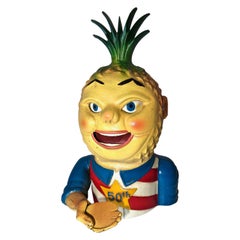
"Penny Pineapple" Mechanical Bank Commemorating Hawaiin Statehood American, 1960
View Similar Items
Want more images or videos?
Request additional images or videos from the seller
1 of 9
"Penny Pineapple" Mechanical Bank Commemorating Hawaiin Statehood American, 1960
About the Item
- Dimensions:Height: 9 in (22.86 cm)Width: 5.5 in (13.97 cm)Depth: 5.25 in (13.34 cm)
- Style:Folk Art (Of the Period)
- Materials and Techniques:
- Place of Origin:
- Period:
- Date of Manufacture:circa 1960
- Condition:
- Seller Location:Incline Village, NV
- Reference Number:1stDibs: LU973223203962
About the Seller
5.0
Recognized Seller
These prestigious sellers are industry leaders and represent the highest echelon for item quality and design.
Established in 1976
1stDibs seller since 2013
246 sales on 1stDibs
Typical response time: 1 hour
Associations
Art Dealers Association of America
More From This SellerView All
- "Cat Boat" Mechanical Toy Penny Bank, American, circa 1968By Utexiqual ProductsLocated in Incline Village, NVIn near mint and all original condition this vintage mechanical bank appeals to both sailing enthusiasts and bank collectors; perhaps a collector of "cat" memorabelia as well. The theme depicts two sailors riding their boat in full sail. It is quite substantial in both size and weight. To operate, (with the lever pushed all the way in from the left); place a coin vertically above the left arm of the sailor in red; from the right; push the lever all the way in. The sail and Boom hits the sailor, knocking him over as the coin drops into the bank. The other sailor moves forward while manning the tiller. The bank is named "Cat Boat...Category
Vintage 1960s American Folk Art Toys and Dolls
MaterialsAluminum, Iron, Tin
- American Mechanical Bank "Melody-Bank, " circa 1946Located in Incline Village, NV"Melody-Bank" is a rare bank and was manufactured by "Electric Coding Machine Co., N.Y.C." in 1946. American made, this is a genuine and authentic vintage mechanical bank, albeit somewhat later, having been manufactured in 1946. It maintains all of the elements of a collectible antique mechanical bank; pleasing shelf appeal and wonderful musical action. The metal faux textured, green painted casing on five sides is fronted by cardboard on wood, filled with delightful images of "children at play with money" lithography. To operate: Wind up the mechanism by turning the brass dial in front clockwise; then put a nickel, dime, or quarter in the appropriate slot at the top. Music will play as additional lithography depicting children's nursery rhymes rotate on the interior circular dial ("Little Boy Blue", "Mary Had A Little Lamb", etc.). Coins are removed by unscrewing the metal plate at the rear bottom. Bank is in excellent all original condition with fully operable musical mechanism. Dimensions: 7" high x 4 9/16" wide x 3" deep. I am a leading specialist in the field of antique mechanical coin banks...Category
Vintage 1940s American Folk Art Toys and Dolls
MaterialsMetal
- "Peg-Leg Beggar" Mechanical Bank, American, circa 1880By H.L. Judd Manufacturing CompanyLocated in Incline Village, NV"Peg-leg Beggar" 19th century cast iron mechanical bank was probably inspired by the many disabled Civil War veterans begging for their subsistence. The bank was manufactured by the ...Category
Antique 1880s American Folk Art Toys
MaterialsIron
- Mechanical Bank "Child's Clock Bank" Japan, circa 1950sBy MarusanLocated in Incline Village, NVA unique and quite scarce bank, made in Japan by the Marusan Company for the American market in the 1950's; this all tin bank is known as (according to the gr...Category
Vintage 1950s Japanese Folk Art Toys and Dolls
MaterialsTin
- "Magic Mouse" Mechanical Bank, Japan, circa 1964Located in Incline Village, NVFor the mechanical bank and toy enthusiast, listed is a tin, lithographed and painted, all original 1960s mechanical bank made by the Yone Company of Japan (see image of logo on side panel). The company was founded in 1950 and is typical of the post war companies who produced outstanding children's toys. The action is unique, clever, and encourages saving money. With the bank wound (attached key wind on the underneath (see image); place a penny on the spot provided on top of the bank. The mouse dashes out of the grey shoe...Category
Mid-20th Century Japanese Folk Art Toys
MaterialsTin
- Mechanical Bank, "Watchdog Safe" in Cast Iron, circa 1890Located in Incline Village, NV"Watchdog Safe" mechanical bank was manufactured by the prolific toy coin bank manufacturer J. & E. Stevens Company in Cromwell, Connecticut in 1890. "Patent Applied For" appears in ...Category
Antique 19th Century American Folk Art Toys and Dolls
MaterialsIron
You May Also Like
- 36 Star American Flag, Civil War Era, Nevada StatehoodLocated in York County, PA36 Stars In The "Great Star" Or "Great Luminary" Pattern On A Civil War Era Flag With A Dusty Blue Canton And A Section Of One Stripe Souvenired, 1864-67, Nevada Statehood 36 star American national flag of the Civil War era, entirely hand-sewn and with some rare and beautiful features. The stars are arranged in a rendition of what is known as the Great Star or Great Luminary configuration, a large star made out of smaller stars. With no official star pattern before 1912, their design was left up to the artistic liberties of the flag-maker. Strikingly visual, the Great Star is both scarce and coveted by collectors. The 36th state, Nevada, entered the Union during the Civil War on October 31st, 1864. The last Confederate general surrendered on May 26th, 1865. The 36 star flag became official on July 4th of that year, but makers of printed flags would have begun adding a 36th star to their flags in 1864, even before the addition of the new state occurred. Lincoln pushed Nevada through just 8 days before the November election. Nevada’s wealth in silver was attractive to a nation struggling with the debts of war and increased support for the Republican ticket. The 36 star flag was replaced by the 37 star flag in 1867, with the addition of Nebraska. Adding to the flag's appeal is its small scale across those with of piece-and-sewn construction. During the 19th century, sewn flags (as opposed to those that were printed on cloth) were typically eight feet long and larger. This is because they were important in their function as signals, meaning that they needed to be seen and recognized from great distance. A flag that was six feet in length was considered small and production of flags smaller than this was extremely limited. Even infantry battle flags were approximately six by six and-one-half feet, about the size of an average quilt of the same period. As time passed, circumstances changed and sewn flags began to find more of a decorative purpose. Smaller flags are more scarce and far easier to frame and display. The Great Star configuration appears to have come about shortly after the War of 1812, when Congressman Peter Wendover of New York requested that Captain Samuel Reid, a War of 1812 naval hero, create a new design that would become the third official format of the Stars & Stripes. A recipient of the Congressional Medal of Honor, Reid became harbor master of New York following the war. During his lifetime, he created many innovations in signal use, including a system that could actually send messages from New York to New Orleans by sea in just two hours. Use as a Naval signal had been the primary reason for the initial creation of an American national flag in 1777, but since there was no official star design, the appearance of our flag varied greatly. Reid’s primary concern centered on both consistency and ease of recognition. His hope was as more and more states joined the Union and more and more stars were added to the flag, that it would remain easily identified on the open seas. In 1818, Reid suggested to Congress that the number of stripes permanently return to 13 (reduced from 15) and that the stars be grouped into the shape of one large star. Reid’s proposal would have kept the star constellation in roughly the same format, in a pattern that could be quickly identified through a spyglass as the number of states grew. His concept for the stripes was ultimately accepted, but his advice on the star pattern was rejected by President James Monroe, due to the increased cost of arranging the stars in what would become known as the “Great Star”, “Great Flower”, or “Great Luminary” pattern. Monroe probably didn’t wish to impose this cost on either the government or civilians, so he suggested a simple pattern of justified rows. Never-the-less, the Great Star was produced by anyone willing to make it and its rarity today, along with its beauty, has driven the desirability of American flags with this configuration. The canton and stripes of the flag are made of fine merino wool. Note how the canton has faded to a dusty seafoam blue, which is endearingly attractive. The stars of the flag are hand-sewn and single-appliquéd. This means that they were applied to one side of the canton, then the blue fabric was cut from behind each star, folded over, and under-hemmed, so that one star could be viewed on both sides of the flag. I always find single-appliquéd stars more interesting, not only because they are evidence of a more difficult level of seam-work and stitching, but also because they are more visually intriguing. The two visible rows of hand-stitching emphasize their hand-sewn construction, which is one reason why flags with single-appliquéd stars often appeal to connoisseurs of early American textiles...Category
Antique 1860s American Political and Patriotic Memorabilia
MaterialsWool
Price Upon Request - 38 Star Antique American Flag, Colorado Statehood, ca 1876-1889Located in York County, PA38 star antique American parade flag with scattered star orientation, made of silk, with generous scale and vivid colors, Colorado Statehood, 1876-1889 38 star American national p...Category
Antique Late 19th Century American Political and Patriotic Memorabilia
MaterialsSilk
Price Upon Request - Antique American Flag, 32 Stars, Minnesota Statehood, ca 1858-59Located in York County, PA32 STARS IN A VERY UNUSUAL NOTCHED VERSION OF THE “GREAT STAR” PATTERN, WITH TWO STARS ABSENT AT THE EXTREME POINTS OF EACH ARM, MADE IN THE PERIOD WHEN MINNESOTA JOINED THE UNION AS...Category
Antique 1850s American Political and Patriotic Memorabilia
MaterialsCotton
- 31-Star Printed American Flag, Celebrating California Statehood, Circa 1850Located in Colorado Springs, COThis is a rare 31-star medallion printed American flag, celebrating the addition of California to the Union. The flag is printed on silk and has a spectacular “Great Star” canton pat...Category
Antique 1850s American Political and Patriotic Memorabilia
MaterialsSilk
- 1889 North Dakota 39 Star United States of America Statehood FlagLocated in Coeur d'Alene, ID39 star silk statehood flag. 23 1/2" x 15". Was the unofficial North Dakota Flag. As South Dakota was also admitted as the 40th state on the same day this...Category
Antique 1880s American Historical Memorabilia
MaterialsSilk
- 41 Stars In a Lineal Pattern With Offset Stars, Montana Statehood American FlagLocated in York County, PA41 STARS IN A LINEAL PATTERN WITH OFFSET STARS THAT CREATE A CROSSHATCH IN THE CORNERS AND CENTER, ONE OF THE RAREST STAR COUNTS AMONG SURVIVING FLAGS OF THE 19TH CENTURY, REFLECTS MONTANA STATEHOOD IN NOVEMBER, 1889, ACCURATE FOR JUST 3 DAYS: Numerous flags appeared with unofficial star counts in early America, produced by flag-makers in anticipation of the addition of more states. The 41 star flag...Category
Antique 1880s American Political and Patriotic Memorabilia
MaterialsCotton
Recently Viewed
View AllMore Ways To Browse
Iron Deer
Vintage Cast Iron Banks
Vintage Coin Banks
Penny Red
Iron Pineapple
Penny Green
Vintage Deer Plates
Vintage Deer Plate
Retro Cast Iron Banks
Mechanical Iron Bank
Cast Iron Mechanical Banks
Penny Bank
Mechanical Coin Bank
Cast Iron Deer
Vintage Cast Iron Mechanical
Cast Iron Pineapple
Vintage Cast Iron Mechanical Bank
Vintage Cast Iron Mechanical Banks

